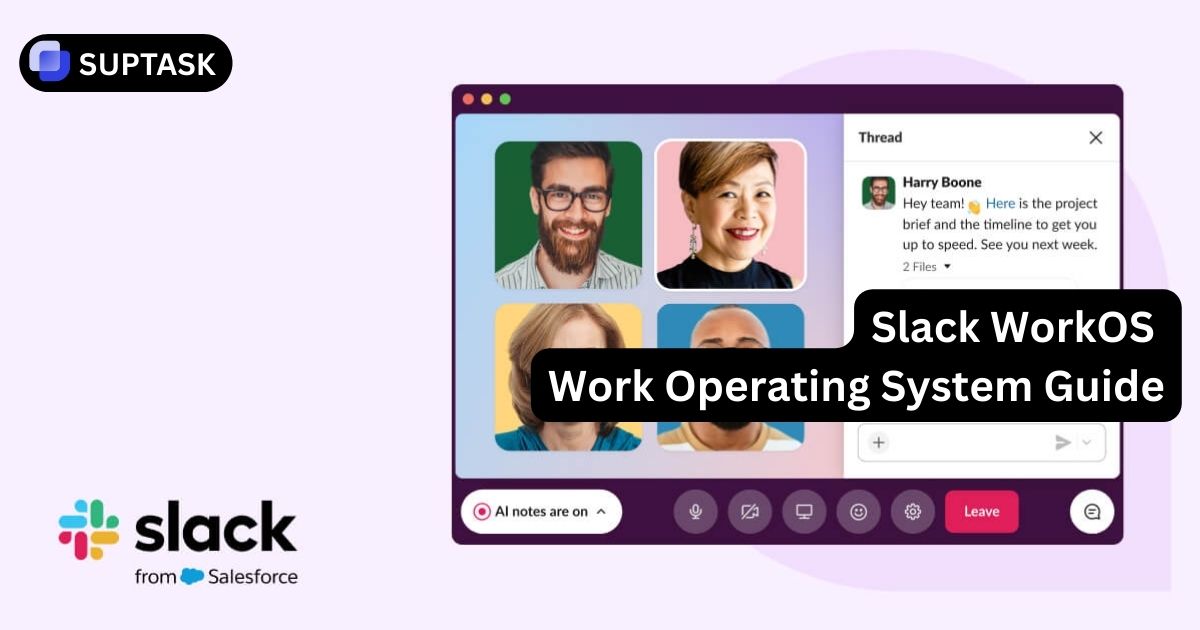Have you ever wondered what happens behind the scenes when you report a technical issue or request a new service from your IT department?
Understanding the difference between incidents and service requests and how they are managed can give you a better appreciation of the complexities of IT service management. In this blog post, we will explore the concept of “service request vs incident”, discuss their importance in maintaining smooth operations, and provide real-world examples to help you better understand the distinction between them.
Embark on a journey into IT service management with us as we delve into the nuances of "service request vs incident" management. Discover how mastering these processes can result in optimized resource allocation, heightened user satisfaction, and streamlined IT operations for your organization.
Key Takeaways
- Incidents are unexpected disruptions that call for immediate resolution, whereas service requests are formal inquiries or demands for services or information that can be scheduled with more flexibility.
- Incident Management is a systematic approach to swiftly restoring regular service operations and minimizing business losses. Its primary objective is to quickly restore services and identify the underlying causes of incidents.
- Differentiating between incidents and service requests offers organizations several benefits. It allows for better allocation of resources, leading to increased user satisfaction. It also streamlines IT operations and contributes to an enhanced customer experience.
Understanding Incidents and Service Requests

An incident refers to an unplanned disruption or decrease in the quality of an IT service that requires immediate attention. A service request is a formal user inquiry for specific services or information that is typically pre-approved and managed through a service catalog.
Understanding the distinctions between incidents and service requests is crucial for efficient IT service management. By treating them as separate entities, organizations can prioritize tasks, allocate resources effectively, and ensure timely resolutions to potential risks.
Throughout our exploration, we will delve into these concepts with a thorough examination, highlighting their distinct qualities and offering effective management strategies.
What is an Incident Ticket?
An incident ticket is a recorded instance of an unexpected interruption or decrease in the quality of an IT service that needs to be resolved promptly. Incidents can significantly impact employee productivity, department efficiency, and entire organizations.
For instance, a system crash or hardware failure can cause widespread disruption and significant financial losses. Statista data from mid-2017 shows that the average monetary loss caused by an IT security incident was $578, highlighting the criticality of investing in robust IT security solutions.
Implementing effective incident management strategies can help mitigate these losses. Incident management, a crucial aspect of IT service management, focuses on promptly restoring services to their optimal state. The main objective of incident management is to minimize the impact of incidents on the organization and ensure the uninterrupted functionality of its IT services.
What is Service Requests?
Service requests are formal appeals from users for specific services or information. They are typically pre-approved and managed through a service catalog. These requests can vary in complexity, ranging from simple tasks like password resets to more intricate needs such as software installations or additional storage space.
Upon receiving a service request, an IT support agent, like a service desk software, is assigned to address the request promptly and efficiently. The service catalog plays a crucial role in ensuring the smooth operation of a service desk by providing users with a comprehensive list of available services. Understanding how a service desk functions is essential for timely and effective resolution of user requests.
While not as pressing as incidents, service requests are crucial in enhancing user satisfaction and ensuring the efficient functioning of an organization's IT services. By effectively understanding and managing service requests, organizations can optimize their resources and deliver a seamless user experience.
How to Prevent Incidents
Ticketing systems are essential for effectively managing and preventing IT incidents that can disrupt operations and hinder organizational productivity. Let's explore how these ticketing systems contribute to averting such potential disturbances:
A critical feature of ticketing systems is their ability to facilitate structured logging and categorization. This functionality allows IT teams to efficiently record and classify incidents, enabling them to quickly determine the nature and severity of each issue. By ensuring clear categorization, these systems enable the appropriate experts to address each problem effectively.
- Priority: Not all incidents carry the same level of urgency. Some can wait, while others require immediate attention. Tools like Suptask allow teams to prioritize tickets based on their impact and urgency, making sure that critical issues are addressed as a top priority.
- Instant Notifications: Advanced ticketing systems now include automated alert features. These systems are designed to promptly notify the appropriate response teams when a critical incident is reported, enabling quick and efficient action.
- Tracking and Monitoring: By consistently monitoring ticket status, we ensure that no incident goes unnoticed or remains unresolved. This allows for a clear picture of the progression of incidents and provides real-time insight into the overall health of IT services.
- Valuable Insights from Data: Ticketing systems gather a wealth of data that can provide organizations with valuable insights. This data reveals recurring issues, system vulnerabilities, and areas that need improvement. By analyzing this data, organizations can take proactive measures to identify and resolve potential problems before they escalate into major incidents.
- Integration with Knowledge Base: Several ticketing systems offer the convenience of integrating with or including a built-in knowledge base. This feature enables faster issue resolutions by referring to previous solutions for similar problems. It reduces the time it takes to resolve an incident and helps prevent its recurrence.
After resolving incidents, ticketing systems often have a feedback loop in place. This allows for valuable input that can help improve processes and identify areas where training or system enhancement is needed.
Difference Between Incident vs. Service Request
.webp)
To better understand incidents and service requests, it's essential to recognize their distinct characteristics and how they are managed. Incidents refer to unexpected interruptions or degradation in the quality of an IT service. These require immediate attention to minimize disruption and restore normal operations. On the other hand, service requests are formal inquiries made by users for specific services or information. They are typically pre-approved or involve standard changes.
To better manage tasks and allocate resources efficiently, organizations need to distinguish between incidents and service requests in IT service management.
- Incidents are urgent and disruptive issues that require immediate resolution to minimize their impact on the organization's operations.
- Service requests, on the other hand, are less urgent and involve pre-approved or standard changes, allowing for more flexible scheduling and management.
This differentiation helps IT support teams prioritize their actions and promptly address the most critical issues.
Try our Slack ticketing system to keep your incident tracking processes streamlined.
Incident Management: Goals and Processes
Incident management is a crucial process that aims to quickly restore services and minimize any potential impact on business operations. By following a systematic approach, incident management ensures the prompt recovery of regular service function. The main objective of a halp alternative is to mitigate disruptions and prevent productivity loss for the organization. Critical components of this process include:
- Detection
- Classification
- Prioritization
- Investigation
- Resolution
As we proceed, we’ll outline the incident management's primary objective and examine the practice contributing to its successful execution.
The Main Goal of Incident Management
The fundamental objective of incident management is to restore services to their maximum capacity in the shortest possible time.
This is paramount as it reduces the disturbance to users and promotes the preservation of service excellence. For instance, a system crash or a hardware failure can cause a significant disruption to an organization’s operations, and a swift resolution is essential to minimize the impact on users and the organization as a whole.
In addition to its primary goal, incident management also plays a crucial role in:
- Identifying and addressing the root causes of incidents
- Restoring services quickly
- Preventing similar incidents from occurring in the future
- Enhancing user satisfaction and operational efficiency
Incident Management Practices
Efficient incident management practices involve categorizing and prioritizing tickets and automating incident resolution. Categorization entails assigning each ticket to a specific incident type or category, which ensures that it is directed to the appropriate team or individual for prompt resolution.
On the other hand, prioritization involves assigning a priority level to each ticket based on its urgency and importance. This ensures that the most critical tickets are addressed first.
Automated incident resolution relies on the use of tools and procedures to swiftly and accurately address incidents, minimizing both the time and effort needed to restore services. By implementing these practices, organizations can effectively handle incidents, reduce disruption to their operations, and ensure high user satisfaction.
Service Request Management: Goals and Processes
.webp)
Service request management refers to organizations' processes and tools to address and fulfill service requests from customers, employees, and vendors. The main goal of service request management is to optimize the fulfillment process and ensure a satisfactory experience for those making the requests. This involves capturing, tracking, and resolving service requests promptly and efficiently.
Next, we’ll outline the aim of service request management and delve into the roles of the service catalog and request fulfillment process in handling and automating service requests.
The Purpose of Service Request Management
The main goal of service request management is to offer users a streamlined process for accessing IT services and support. By effectively managing and fulfilling service requests from customers or employees, organizations can reap the following advantages:
- Streamline processes
- Automate tasks
- Guarantee prompt resolution of requests
- Enhance customer support
- Improve operational efficiency.
Some examples of service requests include requests for new software installations, hardware upgrades, or access to a system. By distinguishing between incidents and service requests, IT teams can prioritize and allocate resources more effectively, optimize IT operations, and give users more prompt and precise responses.
Service Catalog and Request Fulfillment
A service catalog is an extensive list of Information Technology services that users can request through a self-service portal. It serves as a valuable tool for the smooth operation of a service desk by providing users with a clear understanding of the available services and their associated costs. This enables them to make informed decisions when requesting services.
On the other hand, request fulfillment is the process of managing and automating service requests to ensure their prompt and accurate resolution. It involves:
- Capturing the request
- Assigning it to the relevant team or individual
- Monitoring the progress of the request
- Resolving it promptly.
The service catalog and request fulfillment process work together to manage and automate efficiently service requests, ultimately improving overall efficiency and user satisfaction in IT service management.













